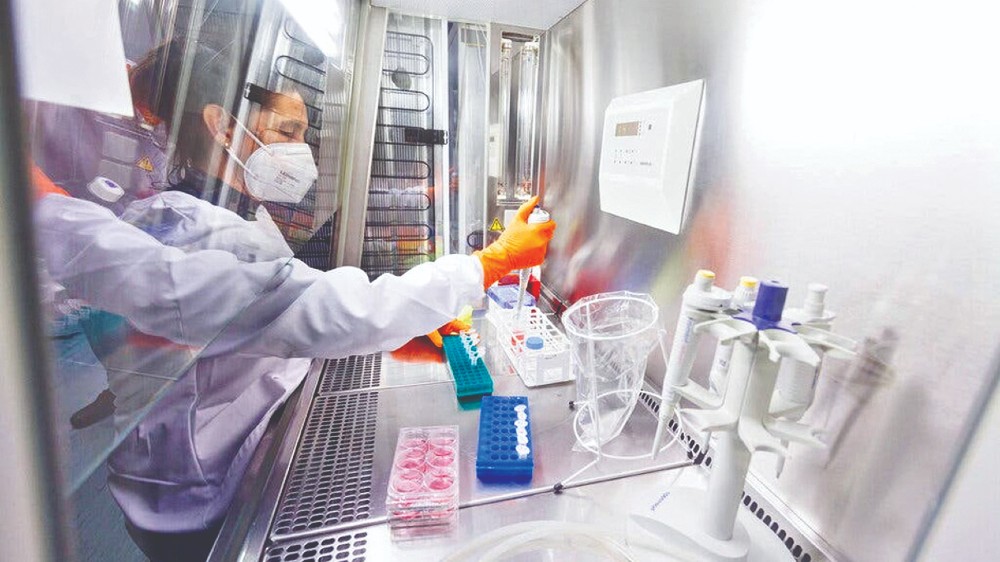How serious is the monkeypox scare?
After more than two years of living through a pandemic, it is understandable that the news of a new virus spreading across the globe could cause alarm, but health experts say that monkeypox is unlikely to create a scenario similar to that of the coronavirus, even if more cases are found.

By KNUVUL SHEIKH
Health officials are tracking more than 100 cases of confirmed or suspected monkeypox that have appeared in countries where the disease does not typically occur, including Australia, Belgium, Canada, France, Germany, Italy, the Netherlands, Portugal, Spain, Sweden, the UK and the US. President Biden addressed the highly unusual cases, stating that “it is a concern in the sense that if it were to spread it would be consequential.”
After more than two years of living through a pandemic, it is understandable that the news of a new virus spreading across the globe could cause alarm, but health experts say that monkeypox is unlikely to create a scenario similar to that of the coronavirus, even if more cases are found. “As surveillance expands, we do expect that more cases will be seen. But we need to put this into context because it’s not COVID,” Dr. Maria Van Kerkhove, the World Health Organization’s technical lead on COVID-19, said in a live online Q&A on Monday.
Monkeypox is not a new virus, and it is not spread in the same way as the coronavirus, so we asked experts for a better understanding of the pathogen — and how the disease it causes is different from COVID-19. How contagious is monkeypox? People typically catch monkeypox by coming into close contact with infected animals. That can be through an animal bite, scratch, bodily fluids, faeces or by consuming meat that isn’t cooked enough, said Ellen Carlin, a researcher at Georgetown University who studies zoonotic diseases that are transmitted from animals to humans.
Although it was first discovered in laboratory monkeys in 1958, which gives the virus its name, scientists think rodents are the main carriers of monkeypox in the wild. It is primarily found in Central and West Africa, particularly in areas close to tropical rainforests — and rope squirrels, tree squirrels, Gambian pouched rats and dormice have all been identified as potential carriers.
“The virus has probably been circulating in these animals for a very, very long time,” Dr. Carlin said. “And for the most part, it has stayed in animal populations.” The first human case of monkeypox was detected in 1970 in the Democratic Republic of Congo. Since then, the virus has periodically caused small outbreaks, though most have been limited to a few hundred cases in 11 African countries.
A handful of cases have made it to other continents, brought by travellers or the import of exotic animals that passed the virus to house pets and then to their owners. But human-to-human transmission of monkeypox virus is pretty rare, Dr. Van Kerkhove said. “Transmission is really happening from close physical contact, skin-toskin contact. So it’s quite different from COVID in that sense.”
The virus can also spread by touching or sharing infected items like clothing and bedding, or by the respiratory droplets produced by sneezing or coughing, according to the W.H.O.
That may sound eerily familiar because in the early days of the pandemic many experts said that the coronavirus also had little human-to-human transmission beyond respiratory droplets and contaminated surfaces.
Later research showed that the coronavirus can spread through much smaller particles called aerosols with the ability to travel distances greater than six feet. But that doesn’t mean the same will turn out to be true for the monkeypox virus, said Luis Sigal, an expert in poxviruses at Thomas Jefferson University in Philadelphia. The coronavirus is a tiny, single-stranded RNA virus, which may have aided its ability to become airborne. The monkeypox virus, however, is made of double-stranded DNA, which means that the virus itself is much larger and heavier and unable to travel as far, Dr. Sigal said.
The writer is a journalist with NYT©2022
The New York Times
Are you in Chennai? Then click here to get our newspaper at your doorstep!
Visit news.dtnext.in to explore our interactive epaper!
Download the DT Next app for more exciting features!
Click here for iOS
Click here for Android



